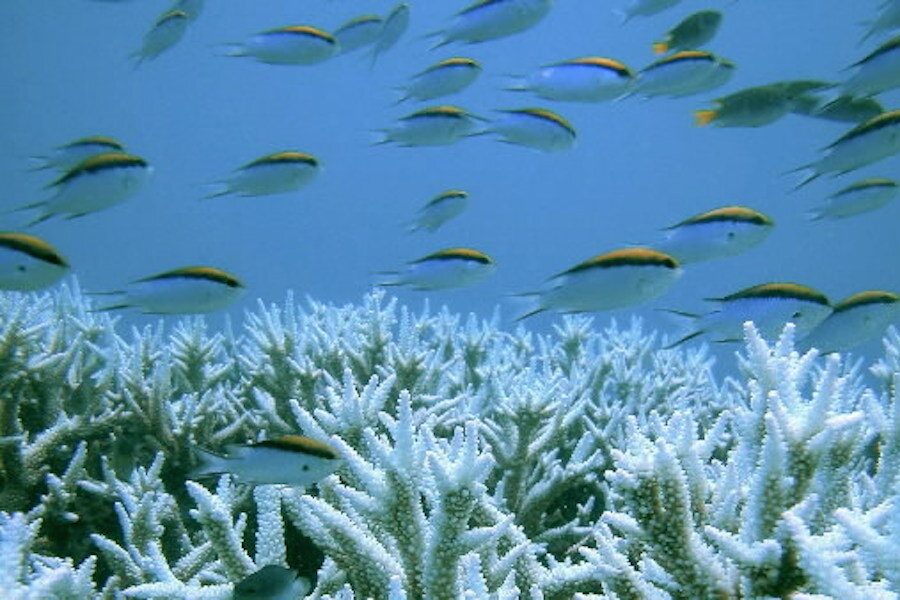Why are spiny damselfish going into permanent 'night mode'?
Loading...
Some good news came out of climate change research on Monday. A study published in the journal Nature Climate Change found that spiny damselfish, Acanthochromis polyacanthus, can adapt to increased acidification of the ocean by changing their circadian rhythms.
This study joins others that have found that energy metabolism contributes to an organism’s ability to adapt to environmental stress. Climate scientists laud the study and its thorough methods, but refrain from claiming marine habitats are saved from rising carbon dioxide levels and temperatures.
“I think there is a sliver of hope, but I don’t think there is any reason for so much hope that we can say complacency is justified,” Lars Tomanek, director of the Environmental Proteomics Laboratory and professor of biological sciences at California Polytechnic State University, tells The Christian Science Monitor in a phone interview.
Adaptation to acidification is “potentially good news,” co-author Philip Munday from Australia’s James Cook University told International Business Times. The process has been found to be harmful to marine organisms and ecosystems.
Acidification occurs when carbon dioxide in the atmosphere, largely from combustion of fossil fuels, mixes with water to form a weak acid.
Though the process was initially considered good news because it decreased atmospheric pollution, research over the past decade has found that a more acidic ocean can dissolve shells, effect chemical communication, and diminish resources for reproduction.
Adaptation to a more acidic environment, therefore, could mean the difference between life and death. “It seems the tolerant offspring may have adjusted their circadian clocks as if it was always night,” one of the study’s authors, Timothy Ravasi from the King Abdullah University of Science and Technology in Saudi Arabia, told Reuters. Levels of carbon dioxide naturally increase at night and dip during the day when carbon dioxide is photosynthesized.
One hypothesis that came out of the study was that “offspring of tolerant parents inherit the ‘flexibility’ in ion-regulatory control, and therefore the ability to phase shift the circadian clock and avoid a maladaptive reaction to elevated levels of CO2 .”
“Circadian rhythms regulate energy metabolism and the production of the byproducts of energy metabolism, which can have a bad effect on cells,” Professor Tomanek explains.
Other species have also shown the potential to adapt to the effects of climate change, Tomanek says. Heat-tolerant algae, for example, is able to replace algae species that are less heat-tolerant in coral.
Though some species are able to adapt in their own ways, the worry scientists have is that the climate change process is happening too fast, Tomanek says. All the elements of an ecosystem are unlikely to change in unison – at the same time and in the same way.
The challenge will not be whether species adapt, but how long it takes them, Cascade Sorte, assistant professor of Ecology and Evolutionary Biology at the University of California, Irvine, who was not involved in the study, tells the Monitor in a phone interview.
Factors that will influence speed of adaptation include the species's generation time, the amount of variation in the population, and how heritable the tolerance genes are, Professor Sorte says.
Sorte would like to see follow-up studies that show how common tolerance is in spiny damselfish and whether tolerance increases over future generations.
“Biological systems are very complex," Tomanek says. “We are in for many more surprises and discoveries, but from what we see already, we know it’s going to be a tough time for most organisms.
“There are going to be a few winners, but there are going to be quite a few losers.”








